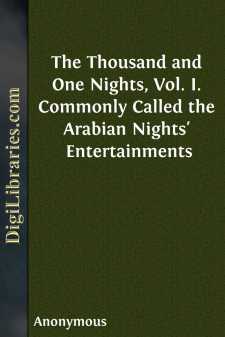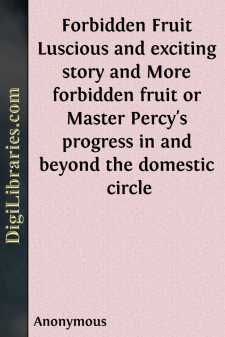Categories
- Antiques & Collectibles 13
- Architecture 36
- Art 48
- Bibles 22
- Biography & Autobiography 813
- Body, Mind & Spirit 142
- Business & Economics 28
- Children's Books 15
- Children's Fiction 12
- Computers 4
- Cooking 94
- Crafts & Hobbies 4
- Drama 346
- Education 46
- Family & Relationships 57
- Fiction 11828
- Games 19
- Gardening 17
- Health & Fitness 34
- History 1377
- House & Home 1
- Humor 147
- Juvenile Fiction 1873
- Juvenile Nonfiction 202
- Language Arts & Disciplines 88
- Law 16
- Literary Collections 686
- Literary Criticism 179
- Mathematics 13
- Medical 41
- Music 40
- Nature 179
- Non-Classifiable 1768
- Performing Arts 7
- Periodicals 1453
- Philosophy 64
- Photography 2
- Poetry 896
- Political Science 203
- Psychology 42
- Reference 154
- Religion 513
- Science 126
- Self-Help 84
- Social Science 81
- Sports & Recreation 34
- Study Aids 3
- Technology & Engineering 59
- Transportation 23
- Travel 463
- True Crime 29
The Thousand and One Nights, Vol. I. Commonly Called the Arabian Nights' Entertainments
by: Anonymous
Description:
Excerpt
ADVERTISEMENT.
The present edition is an exact reproduction of that edited by my father, with my great-uncle's final corrections, and published by Mr. John Murray in 1859. Several reprints of that edition have testified to the continued popularity of the work, and the necessity for the present issue shows that an acquaintance of nearly half a century has not yet wearied the public of the standard translation of the Thousand and One Nights. The secret of Mr. Lane's success is to be found partly in the instinctive sympathy for the spirit of the East, which enabled him faithfully to reproduce the characteristic tone of the original, and partly in the rich store of illustrations of oriental life and thought contained in his Notes. In the various cheap versions, based upon Galland's French paraphrase, the Eastern tone and local colour is wholly wanting; and the peculiarities of life and manners, which contrast so markedly with those of the West, are left unnoted and unexplained. Such versions may serve in an inadequate degree to make the Arabian Nights known to those who care only for the bare stories; but educated readers, who are capable of something more than the mere enjoyment of the romance, and desire to understand the character and habits of the actors and the spectators, find in Mr. Lane's translation, and in his only, a complete satisfaction of their want. It is not merely a scholar's edition, though no oriental student can afford to be without it; but beyond this narrow circle it has ever appealed to the wide audience that cares to know the famous books of the world in their most perfect and faithful reflections.
The actual moment is an opportune one for the reappearance of the work. Egypt just now holds a foremost place in the eyes of the world, and it is of Egypt that the Thousand and One Nights have most to tell. Indian or Persian as many of the tales are in their origin, their setting is almost purely Egyptian; and though the place may be nominally Baghdad or India, or even furthest China, it is in mediæval Cairo, in the days of the Memlooks, that the scene of the Arabian Nights is really laid. The people described are not Hindoos or Chinese, but Arabs and Egyptians as they lived and moved in the fifteenth century, when some of the beautiful mosques and tombs, that still make Cairo the delight of artists, were being built, and the devastating hand of the Ottoman Turk had not yet been laid on the land of the Pharaohs. For a minute picture of Arabian society as it was in the Middle Ages, the Thousand and One Nights have no rival, and it is Mr. Lane's appreciation of this picture, and the wealth of illustration lavished upon it in his Notes, that render his edition the most complete commentary we possess on Muslim life and manners, religion and literature, and make it an indispensable supplement to his famous Account of the Manners and Customs of the Modern Egyptians. The poetry of Eastern life is rapidly fading away under the effacing touch of European civilisation; the characteristic society in which an Haroon-Er-Rasheed, an Aboo-Nuwas, a Kafoor, a Saladin, or a Kaït-Bey, revelled and jested and conquered, is fast becoming matter of history rather than of experience, a field for the antiquary instead of the traveller; and it is well that we can reconstruct it in the pages of the Thousand and One Nights, whose compiler saw it when it was still almost in its Golden Prime, and in the Modern Egyptians, whose author knew it when it still preserved the romantic character which has charmed and fascinated readers of every age and condition....












